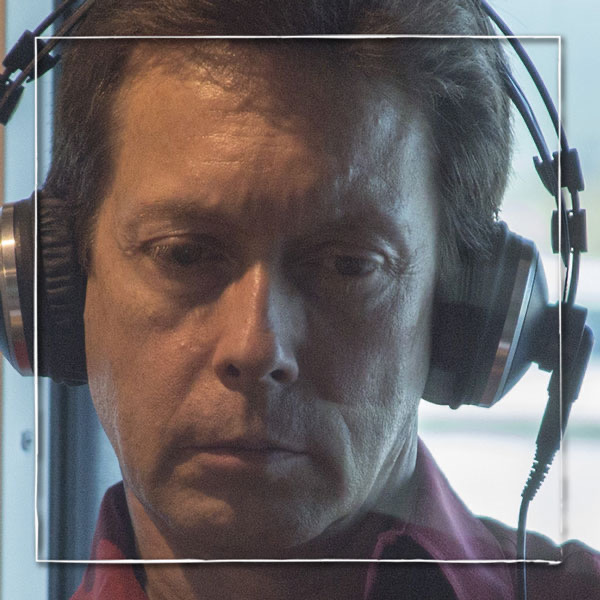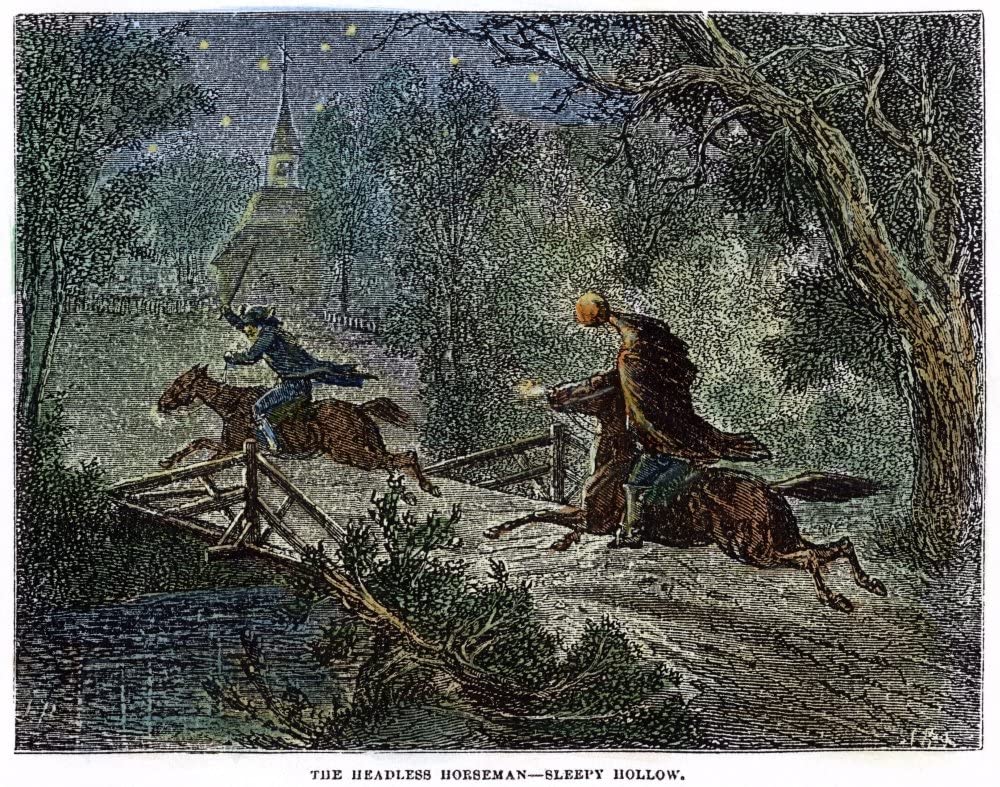Most young people in the last three generations have been introduced to Washington Irving’s short story The Legend of Sleepy Hollow through the Disney animated adaptation package, which includes Kenneth Graham’s The Wind in The Willows. The 1949 film The Adventures of Ichabod and Mr. Toad has long legs both in residuals as a long-term cinematic library asset and in critical acclaim. Another popular but irreverent adaptation is Tim Burton’s 1999 film starring Johnny Depp.
The Headless Horseman is one of Halloween’s most celebrated icons but, of course, the October holiday is never referenced in the story, which is set in 1790 in a Hudson River valley town. Halloween was not yet widely celebrated nor recognized in the young nation. Nevertheless, in honor of the Irving story’s 200th anniversary last year, North Tarrytown was officially renamed Sleepy Hollow.
Yet, it also is recognized as the first truly American ghost story. In honor of what is now its 201st anniversary, Plan-B Theatre’s Radio Hour series returns this year with its 15th episode in a live broadcast of Matthew Ivan Bennett’s newest play based on the Irving story. Directed by Cheryl Ann Cluff, the production will air live Friday, Oct. 29, at 11 a.m. on KUER-FM’s RadioWest program and a rebroadcast at 7 p.m. that day.
Bennett, whose Halloween Radio Hour episodes in recent years have been inspired by his original science fiction stories, was asked by Plan-B to adapt the Irving classic ahead of the story’s 200th anniversary last year. In addition, the Sleepy Hollow episode was intended to be premiered last fall at the Rose Wagner Center for Performing Arts in a live broadcast performance that also would have marked KUER-FM’s 50th anniversary, RadioWest’s 20th anniversary and the Radio Hour series’ 15th anniversary. But, the pandemic led to scrapping the plan. Instead, there was a rebroadcast of the ninth episode, Grimm, based on the classic tales by the brothers, as adapted by Bennett.
Rediscovering the story as an adult reader leads to realizing that the story is less Halloween themed superstition than it is a psychological thriller where the dynamics of fear, jealousy, romantic rivalry and isolation combine in a potent visceral mix. Bennett’s adaptation is far more reverential than others but there also is one major change that becomes consequential in this live Radio Hour version. In Irving’s original, Katrina Van Tassel is barely present, save for a paragraph in the text, the act of dumping the schoolmaster Ichabod Crane and a few passing references. As Bennett says in an interview with The Utah Review, Irving’s framing of Kat (as she is known in the Radio Hour script) is sexist — she is presented as barely more than a pretty, rich young woman.
Bennett preserves the integrity of the language as would have been appropriate in Irving’s time, especially with The Chronicler setting the narrative stakes. The season’s appealing eerie mood is set in this production, as The Chronicler says, “Some say the place was fouled by a German magus. Some that it was cursed by Indigenous elders. … The children had too many nightmares. The farmers heard chanting at the forest’s edge. Ichabod was not the only one to see bad luck in a beetle. He was not the only one to meet ghosts on the road.”
Meanwhile, Bennett fleshes out Kat substantially in the 48-minute script. One of the most significant scenes in Bennett’s retelling occurs near the middle, during a rehearsal of singing psalms with Ichabod and Kat. Ichabod says, “Kat, in these past five weeks — between the psalms you can already sing in perfect pitch without my coaching — you have recited the poems of Phillis Wheatley from memory, performed whole speeches from As You Like It, and have asked my opinion of Jean-Jacques Rousseau’s theory of human nature.” Kat is confident. She is an independent, astute thinker who simultaneously and intimidates the skittish Ichabod.
The lure of impropriety is subtle but also risks dangerous outcomes, as the story unfolds. There are eight characters in the Radio Hour version, including, of course, Brom, the antagonist. It is not difficult to figure out in reading Irving’s original, who is the real villain in the story but Bennett’s version also translates reading between the lines into intriguing, elucidating dialogue, which barely exists, if at all, in the Irving original.
“The Disney version held a central place in my childhood,” Bennett says. “I was tempted to do a straightforward adaptation but with no dialogue in the original, I realized that it would not be helpful in meeting the objective.”
Irving’s original also has problematic components including its references to Black people, which do not gel with appropriate, respectful social conscience. As for Kat, whom Bennett acknowledges as “barely appearing in the story as nothing more than an object of desire,” he adds that the sexist framing became a “peach ripe for picking” in making the adaptation work.
Going further, Bennett says that Irving’s language is irresistibly good. “It really is a fascinating quasi-supernatural tale on thwarted love and jealousy so I decided to have the horror embodied in jealousy and toxic masculinity,” he adds.
While Bennett wrote the drama to be ambiguous in terms of the horror elements, it is left to Cliff’s sound design and Dave Evanoff’s musical scoring to set the suitable tone for the production.
With Cluff’s instruction to avoid scoring the sort of creepy organ music one might associate with a story such as The Phantom of the Opera, Evanoff explains in an interview how he worked and riffed from a Pentecostal hymn that Cluff shared with him. The hymn In the Hour of Trial, written in 1834 by James Montgomery, who was born in Scotland and had Moravian heritage, was not only a favorite of Pentecostal and Apostolic preachers and congregations but also was featured in the official hymnal of the African Methodist Episcopal Church. Montgomery, incidentally, was well known as an abolitionist, an advocate of the temperance movement and he spoke for various social causes, including advocating for the welfare of young chimney sweeps.
“What was even scarier was coming across 15 versions of the hymn and how crazy the original music was,” Evanoff says. He adds that he played with the keyboard effects to produce ghostly sounds such as hammering fists on the piano or picking the strings as if they were being scratched or growling effects with synthesized sound. He also scored original music for the story’s chase scene and key suspenseful moments.
The cast for Sleepy Hollow includes Jay Perry, who has performed in every Radio Hour episode, as Ichabod. Doug Fabrizio, RadioWest host, is Brom and Voice in the Night. Isabella Reader takes on five roles: Kat, The Chronicler, Old Peg, Maggie and Hans. Rounding out the production team are Joe Killian for eFoley and Brian Albers as sound engineer.
For more information about the Radio Hour production, see the Plan-B website, which includes information about downloading a free app to stream the audio for the first 14 episodes of the Radio Hour series.





1 thought on “Plan-B Theatre’s Radio Hour series set to return to live broadcast premiere on KUER-FM’s RadioWest with Matthew Ivan Bennett adaptation of Sleepy Hollow”